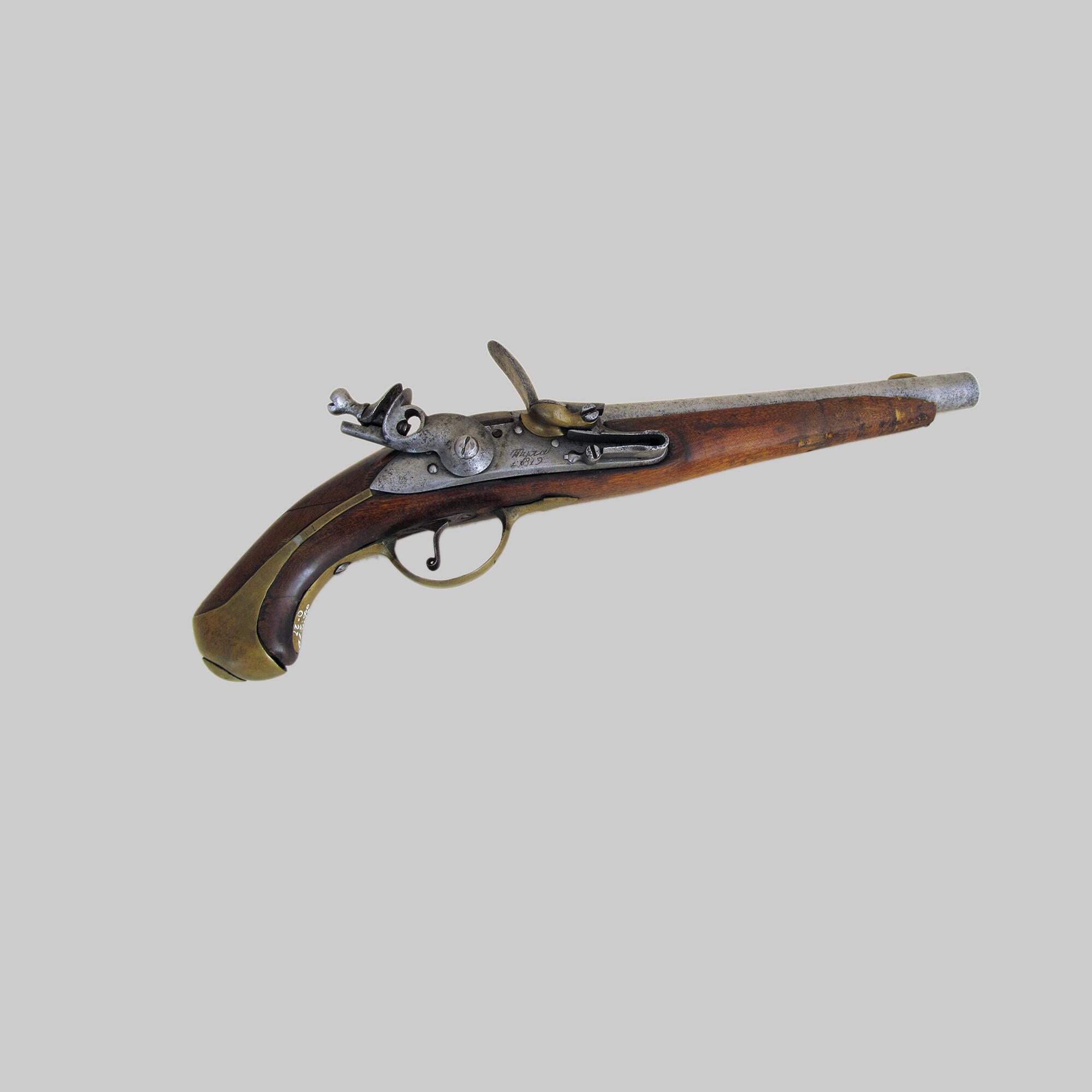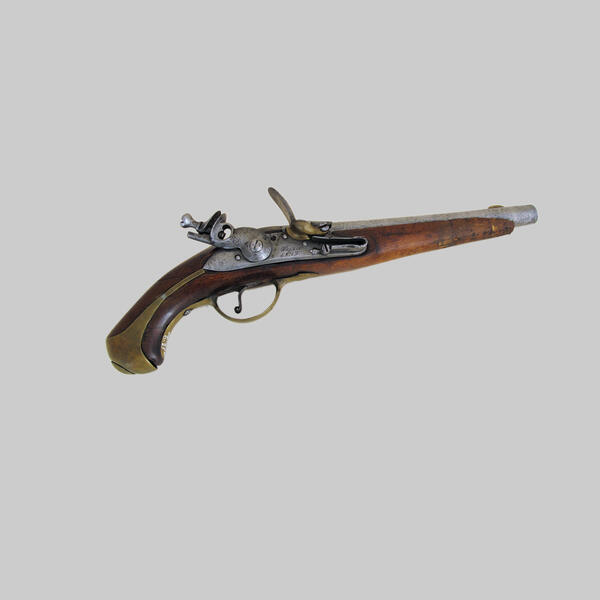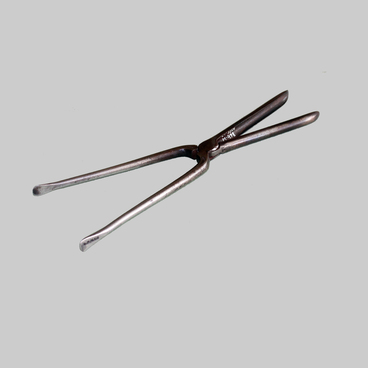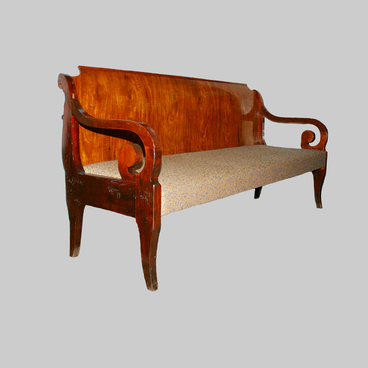The Russian flintlock pistol was created in 1809. It was called flint because of it’s special trigger device, the flint lock. This lock was installed on pistols at the base of the muzzle and, using a flint, generated a sheaf of sparks to ignite the powder charge when the hook was released.
Despite the fact that the model of the weapon was approved by the emperor in 1809, mass production was not introduced until midway through 1810. This pistol was sometimes called a cavalry pistol because it was in service with the Russian cavalry and was used until the 1830s.
The pistol was used by the Russian military in battles and skirmishes during the Patriotic War of 1812. Due to the low fire rate, each hussar carried two pistols, which were stored in special bags in front of the left and right sides of the saddle. Bags or holsters were covered with cloth. This model did not have a ramrod entrance point, which is a special device with which soldiers tamped gunpowder and bullets into the barrel. The ramrod was carried separate from the pistol, which is why they were often misplaced. As a result, many hussars would cut out a special hole for the cleaning rod in their pistols.
They loaded the weapon by a specific system: first, a paper cartridge containing gunpowder and a bullet was torn with the teeth, in the Russian army they even ordered “bite the cartridge”, and poured a little gunpowder into a special hole. Next the safety was put on. If the pistol was to misfire at the wrong moment, the shooter could be seriously injured. The rest of the gunpowder was poured into the barrel and the bullet was lowered there, then pressed in with a ramrod. In battle, soldiers often did without a ramrod and simply struck butt against a hard surface. The weapon would often misfire roughly 15 times per 100 rounds.
Decembrist Matvey Muravyov-Apostol, a participant in the Patriotic War of 1812, certainly knew about weapons. Memories of the writer and artist Mikhail Znamensky about the situation in the house of Muravyov-Apostol have been preserved. A special place in the Decembrist’s office was occupied by his ‘guns with hunting accessories’.
The displayed specimen is a 1809 military issue flintlock pistol. The lock plate is engraved with the inscription ‘Tula’, while the year of manufacture is 1819. On the upper part of the handle there is an oval-shaped copper plaque with the monogram of Alexander II, which, apparently, was added to the pistol much later, during the reign of this emperor.
Despite the fact that the model of the weapon was approved by the emperor in 1809, mass production was not introduced until midway through 1810. This pistol was sometimes called a cavalry pistol because it was in service with the Russian cavalry and was used until the 1830s.
The pistol was used by the Russian military in battles and skirmishes during the Patriotic War of 1812. Due to the low fire rate, each hussar carried two pistols, which were stored in special bags in front of the left and right sides of the saddle. Bags or holsters were covered with cloth. This model did not have a ramrod entrance point, which is a special device with which soldiers tamped gunpowder and bullets into the barrel. The ramrod was carried separate from the pistol, which is why they were often misplaced. As a result, many hussars would cut out a special hole for the cleaning rod in their pistols.
They loaded the weapon by a specific system: first, a paper cartridge containing gunpowder and a bullet was torn with the teeth, in the Russian army they even ordered “bite the cartridge”, and poured a little gunpowder into a special hole. Next the safety was put on. If the pistol was to misfire at the wrong moment, the shooter could be seriously injured. The rest of the gunpowder was poured into the barrel and the bullet was lowered there, then pressed in with a ramrod. In battle, soldiers often did without a ramrod and simply struck butt against a hard surface. The weapon would often misfire roughly 15 times per 100 rounds.
Decembrist Matvey Muravyov-Apostol, a participant in the Patriotic War of 1812, certainly knew about weapons. Memories of the writer and artist Mikhail Znamensky about the situation in the house of Muravyov-Apostol have been preserved. A special place in the Decembrist’s office was occupied by his ‘guns with hunting accessories’.
The displayed specimen is a 1809 military issue flintlock pistol. The lock plate is engraved with the inscription ‘Tula’, while the year of manufacture is 1819. On the upper part of the handle there is an oval-shaped copper plaque with the monogram of Alexander II, which, apparently, was added to the pistol much later, during the reign of this emperor.



